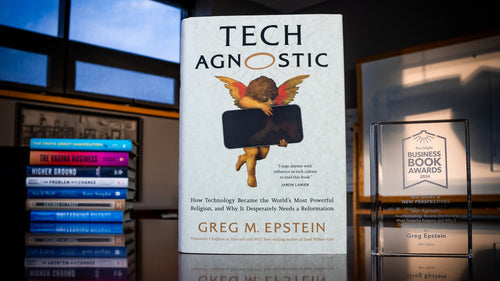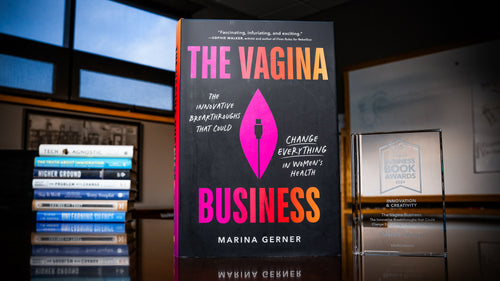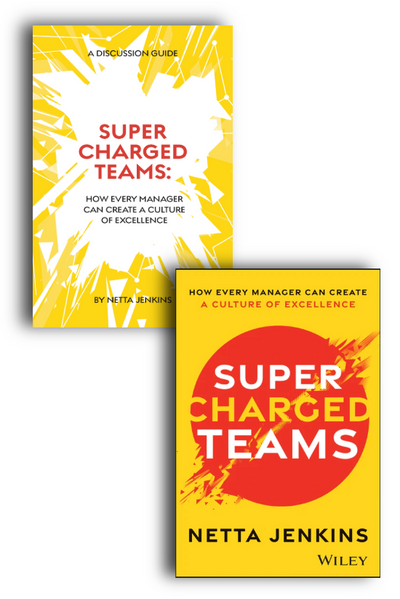An Excerpt from Unstoppable Entrepreneurs
Lori Rosenkopf, Vice Dean of Entrepreneurship at the Wharton School, offers a guidebook encouraging readers to tap into their entrepreneurial potential.
 When you think of the typical entrepreneur, what's the first image that comes to mind? If your mental picture is of a young Silicon Valley tech prodigy or a venture capital-backed founder with the latest viral product, you're not alone. However, these aren't the only routes to successful entrepreneurship.
When you think of the typical entrepreneur, what's the first image that comes to mind? If your mental picture is of a young Silicon Valley tech prodigy or a venture capital-backed founder with the latest viral product, you're not alone. However, these aren't the only routes to successful entrepreneurship.
Lori Rosenkopf, Vice Dean of Entrepreneurship at the Wharton School of the University of Pennsylvania, pulls together stories and research from her thirty-year career in her new book, Unstoppable Entrepreneurs, to highlight the variety of paths available to new and aspiring entrepreneurs. She presents these options as seven distinct entrepreneurial paths, emphasizes the six Rs of entrepreneurial success, and provides tools and strategies for entrepreneurs to navigate a variety of common obstacles and setbacks.
The following excerpt introduces the story of Charbel Zreik and his journey into a style of entrepreneurship that emphasizes acquiring existing companies rather than starting a new company from scratch to achieve success.
◊◊◊◊◊
The Acquirer
When Charbel Zreik bought DCI Design Communications in 2014, the 30-year-old telecom and IT services company’s annual revenue was $18 million. Three and a half years later, with revenue doubled, he sold the company for more than three times the purchase price. During his tenure as CEO, Charbel also nearly tripled the number of employees. And at the time of the sale, the company served 3,500 hotels across the United States and Canada, up from 850. Charbel’s purchase and leadership of DCI exemplifies entrepreneurship through acquisition (ETA). Similar in strategy to private equity, ETA involves purchasing small or medium-sized businesses with the potential for exceptional growth. By contrast, private equity typically requires bigger deals to make adequate returns, so private equity firms acquire larger companies and install seasoned CEOs to run them.
To finance his purchase of the business, Charbel raised capital from investors and earned equity for various milestones and at different return levels. DCI’s growth meant investors saw their capital nearly triple when the business was sold after three and a half years. And while that growth might seem high, according to Stanford University’s latest Search Fund Study,27 the rate of return is consistent with ETA investments.
What is unusual, though, is Charbel’s path to DCI.
Roots of Entrepreneurship
Born in Lebanon during the country’s civil war, Charbel was eight when he moved with his family to New York. Many of them did not speak English, and they had to “think about how to survive, because we arrived with very little. By default, entrepreneurship became part of my career plan from the minute we landed in this country,” he recalls. Charbel and his mother collected cans on street corners, earning a nickel for each one. He also had a newspaper route and quickly became the most successful “paperboy” in Westchester County, with the highest delivery volume and collection rates.
By the time he was a teenager, his older brother had started a moving and storage company in Manhattan. “I worked with him and ran the business every summer when he returned to Lebanon. The notion of doing what you can to earn money through creative means was really instilled in me through the immigrant journey. Those experiences sparked my deep desire for entrepreneurship.”
After what he calls a lucky break—his grammar school principal urged him to sit for the highly competitive entrance exam to a private, tuition-free boys’ school on the Upper East Side of Manhattan—he followed a fortunate academic and corporate path from Cornell University to JP Morgan and then to Wharton. It was while completing his MBA when Charbel’s thoughts again returned to entrepreneurship. “I spent week after week trying to figure out what my passion was and writing start-up plans that got killed because my classmates and I found too many risks.”
His turning point came unexpectedly at a conference session led by Staples cofounder and former CEO Thomas Stemberg: “I had the audacity to raise my hand and ask, ‘You started a company about pens and paper and Post-it notes. What in the world could have been the passion behind that?’”
“His answer still speaks in my mind,” says Charbel. “I remember Stemberg said something along the lines of, ‘I think building a business around your passion is the best way to destroy value. If you like to ski, go ski. If you have some other passion, go do it. But when you make a business decision, it’s about a need in the market.’ That was a liberating moment for me. It allowed me to think about entrepreneurship differently.”
And yet when he graduated, Charbel chose a consulting job at McKinsey, where he honed his expertise in leadership. “I earned a lot of credibility for my work,” he says, “teaching leaders how to change mindsets and behaviors and companies.” But after four years, the desire to create and build something tangible returned. “My next major step at McKinsey would have been to partner. But when I looked at what that role entails, I realized it is about solving intellectual problems rather than achieving practical things. I wanted to run a company and own the P&L (profit and loss statement). I wanted to shoulder the risk and create something of my own.”
The Path: Entrepreneurship through Acquisition
Charbel didn’t choose to become an entrepreneur in the traditional sense of starting a business from scratch. Instead, he opted to acquire an existing business. The ETA path, one easily overlooked by aspiring entrepreneurs, harnesses entrepreneurial vision: the ability to find untapped opportunities and drive substantial growth in existing small to mid-sized businesses. In addition to growth potential, ETA advantages include the direct route to senior leadership that Charbel was looking for, along with a high degree of professional independence. ETA also mitigates many of the risks associated with startups:
A focus on established businesses with a proven track record means they can dependably avoid startups’ bleak failure rate (according to the US Bureau of Labor Statistics, about half of all private sector small businesses fail within the first five years,28 and a recent report on startups puts the failure rate at 90%).29 Due diligence allows entrepreneurs to make a safer bet, weeding out companies whose growth and survival potential are uncertain.
But while ETA offers clear advantages—and is becoming a more popular route for would-be entrepreneurs—many don’t choose this path because they believe a common myth that only those wealthy enough to personally fund the search for and purchase of an existing business can consider an acquisition. Today, there is a strong and growing pool of investors for both debt and equity financing that are eager to back and partner with first-time CEOs interested in ETA. In other words, you don’t need substantial financial reserves to become an entrepreneur through acquisition.
Excerpted from UNSTOPPABLE ENTREPRENEURS: 7 Paths for Unleashing Successful Startups and Creating Value through Innovation by Lori Rosenkopf, copyright 2025. Reprinted by permission of Wharton School Press.
About the Author
Lori Rosenkopf is the Simon and Midge Palley Professor at the Wharton School of the University of Pennsylvania. As Vice Dean for Entrepreneurship, she serves as Wharton’s faculty director for Venture Lab, Penn’s home for student entrepreneurs, and also their San Francisco campus. In a prior role as Vice Dean of Wharton’s Undergraduate Division, she introduced a new curriculum and developed experiential classwork in the tech sector. For over thirty years, Rosenkopf has taught entrepreneurship and management of technology to more than 20,000 high schoolers, undergraduates, MBAs, and executives, connecting these learners to many of the most entrepreneurial alumni at Wharton and Penn through treks, panels, and classes.































































